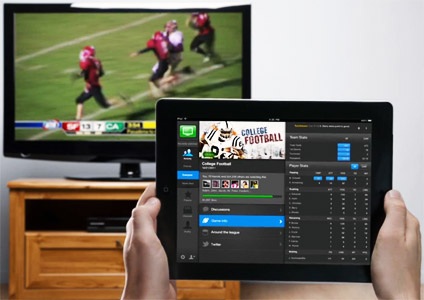If TV Is Now A ‘Secondary Device’, Why Are Multi-Screen Campaigns Still So Difficult?
by on 4th Jun 2014 in News


New research from YuMe indicates that the TV is losing its prominence in terms of media consumption, but continues to dominate ad spend, pointing to a failure of the digital media industry to keep apace with its own innovations.
Charting recent developments in the programmatic video sector, ExchangeWire asks what hope the ad tech sector has in taking its place at the top table of advertising platforms, when it’s still so difficult to track and attribute value to programmatic display, let alone video?
TV is increasingly becoming a “secondary device” especially among “millennials”, according to Ed Haslam, YuMe’s senior VP of marketing, speaking to media agency research analysts and planners in London yesterday (3 June) when promoting its newly-launched reach calculator – or “reach-a-lator”.
Calculating reach
The online tool helps advertisers calculate the impact of shifting their advertising dollars from TV to multi-screen devices – i.e. spreading its budget across TV, desktop, and mobile devices – will have on their campaign goals via a tie-up with Nielsen.
The pair have combined to launch the tool which uses insights gleaned from a study of over 6,000 web users, across a number of continents. The reach calculator, which i intended to be used as a planning tool, tracks the impact of video ads shorter than 30 seconds on screens across devices using metrics such as ‘reach’, ’brand recall’, purchase intent’, etc.
Haslam said: “This is the first time we have built a tool based on research that media agencies can use in their offices to do multi-screen video planning.”
Mobile's primacy with youth audiences
In a presentation to media agency staff yesterday, Haslam was eager to highlight how the research pointed to the growing dominance of digital media, and especially mobile devices, 91% of millennials surveyed claiming they use a connected device while watching TV.
The survey also revealed that of 41% millennials answering the questions, adding that they were accessing content related to the TV, such as looking up what;s being shared about said programming on screen.
“If we presume that the TV is the primary device, that is a bit controversial, some are beginning to think of the TV as the secondary device. The TV is the thing on in the background, while the connected device is the one in your hand,” said Haslam.
“Age matters very much when you’re ‘going multi-screen’ and with this planning tool – it’s not an optimisation tool’ it – you can see what effect taking your campaign mobile will have,” he added.
YuMe is currently ‘roadshowing’ its new planning tool to media agencies, and its intentions are clear; to shift traditional brand advertising budgets away from the traditional TV screen, to not just online, but on mobile devices in particular.
Problems preventing change
Although the assorted media agency staff appeared receptive to the presentation, what is clear is that there is an inherent inertia among advertisers when it comes to mobile. When fielding questions from the assembled media agency staff, representatives from Nielsen and YuMe were asked the question of ‘why is is it so difficult to calculate the appropriate spend, and ROI of channeling their budgets via mobile.
The answers centred around the usual set of answers, such as technological issues like platform fragmentation – such as iOS and Android – differences in how tot identify and track mobile users (in a cookie-less world), plus legacy media owners not always having the resource to properly promote this sector of their inventory.
Sources tell ExchangeWire that in the UK in particular, broadcasters are often unwilling to sell quality inventory via exchanges or ad networks, with all quality inventory being sucked up in TV screen buy add-ons.
The scale of these problems are further compounded by change of pace in the technology on offer. For instance, why were issues such as view ability standards not agreed during the ‘desktop era’?
As evidenced above by YuMe’s research, we are now entering a stage when mobile device usage is beginning to eclipse that of desktop- and TV-based media consumption. But the fragmentation of the mobile landscape is only spurring the number of addressable platforms that media owners have to develop for further increases their costs, while the lack of targeting capabilities dilutes their revenues.
This is a scenario that legacy TV broadcasters will have to contend with, much sooner than they think.
Difficulties with agreeing viewable videos
To further contextualise the scale of the task ahead of the broadcast TV, and video industry, yesterday also saw UK-based programmatic video firm Coull host a roundtable discussion, where host-CEO Irfon Watkins summarised the state of the union: “Programmatic [on video] is problematic!”
To being with, the industry here has yet to agree a singular definition of when an online video ad is viewed or not. This issue is being debated in IAB working groups here, but the industry is some way off agreeing a binary definition, according to Watkins.
For instance, there are discrepancies over things sun as autoplay ad units – the new darling of Facebook’s offering – as there is discrepancies over whether or not such ads are proactively viewed, nevermind if this ad was viewed on-screen, or if it’s above, or below the fold.
Ad ServerAdvertiserattributionCross-ChannelCross-DeviceDataDigital MarketingMartechMedia SpendMobilePerformanceProgrammaticTargetingTradingTVVideoViewability








Follow ExchangeWire